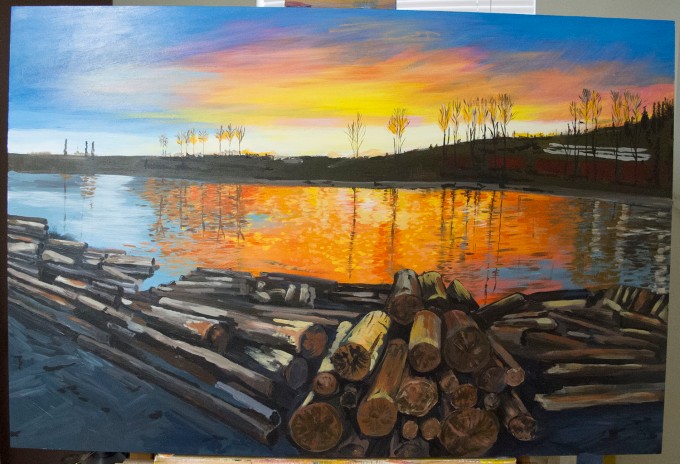Trying to get an image of some of my paintings to put in my posts is challenging. Sunset Logs is challenging because the camera is trying to set white balance and so is Photoshop. Many people are unaware that their monitor may be adjusting its brightness depending on the ambient lighting and may also set white balance. The painting contains a lot of dark tones as well as some saturated reds and yellows, all of this comes together to make a fairly dark image. The painting is rather dark but needs to be lighter in the mid to light tones to look right. My camera simply takes the tones and averages them then spreads those tones across the visual spectrum. I suspect that some Websites are doing the same thing again, sometimes throwing a wrench in the process. I think WordPress does this although I’m not at all sure, and if so it is likely only a problem with some images.
Images that I’ve prepared for my blog just don’t look right. They are often too light and different from images that I put on my Website. I can make them a little darker or lighter but I don’t know how the images appear on other monitors. I think I just have to make them as close as I can on my monitor in my studio. This particular painting is more challenging than most. It will likely look different on other monitors but I have very little control over that. I have done extensive modifications to several images of my paintings. I am quite confident that the digital image is very close to the painting in colour and tone. The digital image matches the painting when the image is shown on my monitor, in my studio with its ambient lighting.






